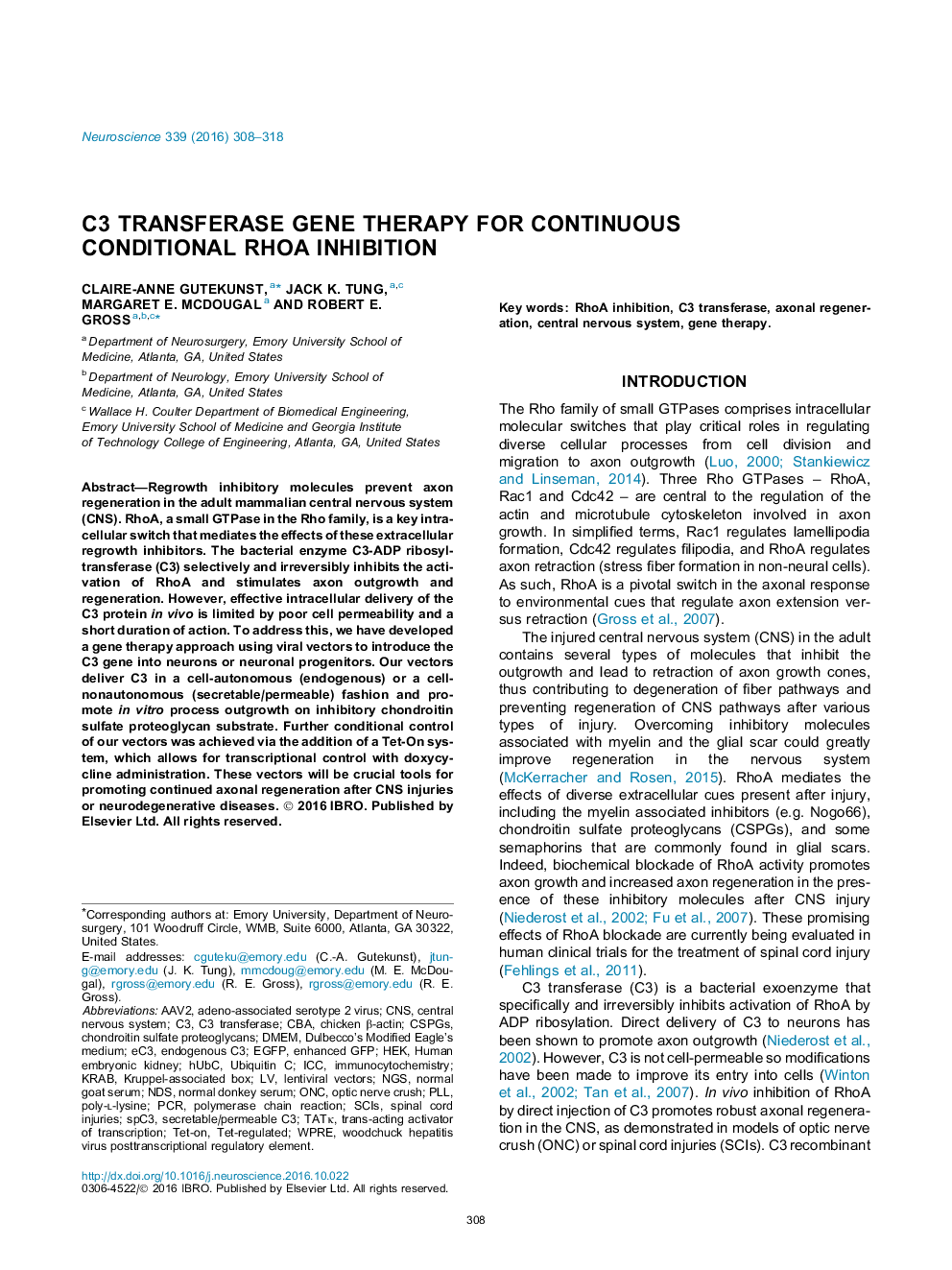| Article ID | Journal | Published Year | Pages | File Type |
|---|---|---|---|---|
| 6270671 | Neuroscience | 2016 | 11 Pages |
â¢Viral vectors expressing endogenous or secretable/permeable forms of C3 transferase were generated.â¢Endogenous and secretable/permeable C3 transferase promotes cell process growth on inhibitory substrates.â¢A conditional secretable/permeable C3 shows reuptake by adjacent cells for more widespread effects.
Regrowth inhibitory molecules prevent axon regeneration in the adult mammalian central nervous system (CNS). RhoA, a small GTPase in the Rho family, is a key intracellular switch that mediates the effects of these extracellular regrowth inhibitors. The bacterial enzyme C3-ADP ribosyltransferase (C3) selectively and irreversibly inhibits the activation of RhoA and stimulates axon outgrowth and regeneration. However, effective intracellular delivery of the C3 protein in vivo is limited by poor cell permeability and a short duration of action. To address this, we have developed a gene therapy approach using viral vectors to introduce the C3 gene into neurons or neuronal progenitors. Our vectors deliver C3 in a cell-autonomous (endogenous) or a cell-nonautonomous (secretable/permeable) fashion and promote in vitro process outgrowth on inhibitory chondroitin sulfate proteoglycan substrate. Further conditional control of our vectors was achieved via the addition of a Tet-On system, which allows for transcriptional control with doxycycline administration. These vectors will be crucial tools for promoting continued axonal regeneration after CNS injuries or neurodegenerative diseases.
Graphical abstractDownload high-res image (106KB)Download full-size image
